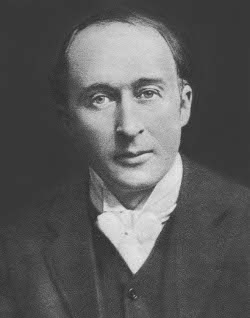Here's my interview with the wonderful Corinne Winters, the young American soprano who's about to star in the new production of La Bohème that opens on Friday at ENO. From yesterday's Independent (but I can't locate it yet on the new-look website). This fresh-sounding staging, a co-production with Dutch National Opera, is directed by Benedict Andrews and also stars Zach Borichevsky as Rodolfo, Duncan Rock as Marcello and Rhian Lois as Musetta. Xian Zhang conducts.
 |
| Corinne Winters. Photo: Kristin Hoebermann |
"I CAN SING ALL DAY"
Corinne Winters, the young American soprano, meets me at the London Coliseum. It has effectively been her artistic home since her breakthrough appearance as Violetta in Verdi’s La traviata in 2013. Her megawatt personality and quick, strong thinking remain undimmed after a full-on morning rehearsal for English National Opera’s new production of La Bohème, in which she sings Mimi, perhaps Puccini’s best-loved heroine. “I have this indestructible thing where I can sing all day,” she remarks. “It’s just the way my throat is. Some of my friends joke that I have cords of steel.”
She must have nerves of steel, too, as some of ENO’s most contrary critics grumble when non-UK singers star in the company’s productions. Winters shrugs that off. “That doesn’t faze me,” she says. “I know why I’m here and I have a lot of support.” That emanates from many sources, ranging from the artistic team of ENO to fans on Twitter.
The company helped to propel the Australian tenor Stuart Skelton to stardom; Winters could be next. At 32, she has everything: the voice, the charisma, the looks, the intensity, the acting. The rounded bloom of her high notes made her Teresa a highlight of Berlioz’s Benvenuto Cellini in Terry Gilliam’s brilliant 2014 production. Her Violetta – touching, vulnerable and vocally flexible, melting or brilliantly edgy as necessary – apparently won her several years’ worth of further engagements.
Nevertheless, Winters didn’t know opera existed until she was 17. “In suburban America, it’s not part of life – we never even hear about it,” she says. She is from Frederick, Maryland. “My father was a lawyer, but he was an amateur rock musician and had a fantastic ear,” she remembers. “We used to sing Beatles songs together – he would take John Lennon’s line, I would take Paul McCartney’s, and we’d sing in harmony. That was my entrée into singing.
“I started with a choir and loved it. I thought I would keep doing that on the side – I wanted to be a writer or a psychologist. But then it was time to apply for colleges and I didn’t want to stop singing, but I’d never taken a voice lesson in my life. So I took one when I was 17 and the teacher said, ‘You have a powerful operatic voice’. I thought, ‘What?’”
She trained first as a mezzo-soprano, only discovering later that her true voice was higher and stronger; and the penny dropped in earnest when she finally attended her first opera, which was La Bohème. “The first thing was the wall of sound that hit me and the vibrations I felt in my body,” she says. “I was completely blown away by the sheer power of the unamplified human voice.” In effect, she had found herself: “The mezzo roles I’d been doing didn’t suit my temperament,” she remarks. “Cherubino in The Marriage of Figaro was fun, but Mimi is heart-on-sleeve, heartfelt, raw. That’s who I am.”
Tatyana in Eugene Onegin
Her first decade in the profession was tough: “Ten rejections for every ‘yes’,” she says. “You have to be persistent to deal with that.” All that changed after La traviata. This season she faces a concentrated patch of debuts, including Desdemona in Verdi’s Otello, in Antwerp. Last year she released an album of Spanish songs, upon which Plácido Domingo commented that her voice has “such a charismatic, opulent sound”. Next season she sings at the Royal Opera House. Her “dream role” would be Puccini’s Madama Butterfly, she says, though she thinks she would not be ready to tackle it for another seven years.
In July Winters moved permanently to the UK. Personal life takes a back seat to her singing at the moment, she adds, but she is thriving as a Londoner. “Most of my work is here or in Europe, and I love the theatre, the ballet and going to museums,” she says. “London’s culture is so rich that I can do something different every night.”
When it comes to convincing newcomers of the worth and relevance of opera, though, she senses there is more work to be done. “I feel many opera houses are getting their marketing to young people wrong,” she declares. “I think it’s the sheer power of great singing that makes people come back. We have to trust that – and to trust the fact that a 17 year old will know if they like something. The young people on Twitter say, ‘We just want to hear great singing – we don’t need gimmicks to come to the opera’. If gimmicks get people through the door, great. But we need to go back to the root of it.
“As with any learned art form,” she notes, “if you don’t know about it you tend to think you don’t like it. I once thought I didn’t like opera. Look at me now – I’m obsessed!”
La Bohème, English National Opera, from 16 October. Box office: 020 7845 9300


